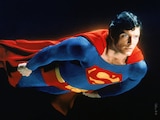Happy Pride! These days, we’re all trying to improve and educate ourselves on how we can be better to each other. With that in mind, I wanted to explore a topic particular to my own background as a queer creator/consumer: queer coding.
Queer coding is a survival tactic.
That’s a heck of a sentence, so let’s unpack it. First, it helps to understand the phrase “queer coding.” It is defined as imbuing a fictional work with queer themes or characters without ever explicitly acknowledging the queerness.
The purpose of queer coding depends largely on the author, but through most of the history of published fiction, it happens because a creator wants to explore these themes, but will face consequences for doing so, whether from the publisher, audience, or culture at large.
What kind of themes are we talking about, here? What are some things a creator may use to indicate queerness without explicitly touching upon it? They may implement a character with a secret identity. Or a character with nontraditional relationships with characters of the same sex. Or a character dressing in a flamboyant manner. Or acting in manners stereotypically associated with LGBTQIA+ people.

“Batman stories are psychologically homosexual.” - Fredrick Wertham
Dr. Frederick Wertham, a psychiatrist who specialized in the effects of environment and social background on psychological development, did incalculable harm to the comic book medium that it’s still trying to shake off. His 1954 book Seduction of the Innocent claimed the comics of the day as depraved and harmful to children. This led to creation of the Comics Code Authority, a voluntary yet omnipresent label ensuring comics bearing its sigil would follow many guidelines, one in particular being that “Illicit sex relations are neither to be hinted at nor portrayed. Rape scenes, as well as sexual abnormalities, are unacceptable.”
Wertham, the Code, and culture at large during this era, spoke of homosexuality as on par with sexual violence.
It is at this point one might say the code was stupid because authors might not have actually intended on portraying anything gay, and indeed that is one reason of many that Wertham was wrongheaded. But dependent on the notion of queer coding is the notion of a “queer reading,” which is to say consuming a fictional (or nonfiction) work specifically from a queer point of interpretation.

Without getting into the deep weeds of fiction history and analysis, I’ll say every possible reading of a work, queer or otherwise, is as valid as you can back it up with evidence from the work. Superhero stories by their nature have lots of such evidence, and a queer reading is always worth exploring, regardless of authorial intent.
That being said, especially with early work, be aware queer readings are often not flattering. Villains are often the focus of queer coding, which leads directly into villainizing gay people and ideas.
Another aspect of queer coding is queerbaiting. That is, the act of leading an audience to believe that a work will have queer characters and themes and then refusing to explicitly acknowledge any queerness. It “baits” a queer audience with themes and character interactions that appeal while never delivering on these themes, or closing their portrayal with a heterosexual relationship to cement characters as straight.

Queerbaiting is often done by creators for the same reasons as queer coding—ones outside their own control. Writer-producer Dwayne McDuffie has been quoted as saying he wrote Richie in Static Shock as gay, though he certainly would never have been allowed to canonize that in an early-2000s children’s cartoon. In that sense, isn’t it better to have queer coding than no representation at all?
I personally would argue it is, yes. But it’s also not nearly enough. LGBTQIA+ people are people, and we deserve stories and heroes from our point of view much as anyone else does. There should absolutely be LGBTQIA+ heroes and stories, just as there should be Black ones, and Latinx ones, and women, and heroes with disabilities, and heroes of varying religious and philosophical backgrounds.
Why do we need to continue to move past queer coding? It’s because not only has culture and the comics audience always been at least partially gay: it’s also getting gayer.

Put simply, queer coding was a method that writers used to explore LGBTQIA+ themes they were culturally or professionally not allowed to explore. These themes sustained an LGBTQIA+ audience during their day, embraced and discussed in secret in a community that was not allowed to operate openly. It was a survival tactic. As our community has grown and the hard work of changing culture has made progress, coding is no longer sufficient. LGBTQIA+ characters and themes need to explicitly exist and need to be represented and held as valid because the audience deserves it, and creators deserve to explore it.
LGBTQIA+ characters get the spotlight this month in DC Pride, an 80-page anthology featuring some of the best queer storytellers in comics. Available now in comic shops and digital retailers.
NOTE: The views and opinions expressed in this feature are solely those of Esper Quinn and do not necessarily reflect those of DC Entertainment or Warner Bros.




















